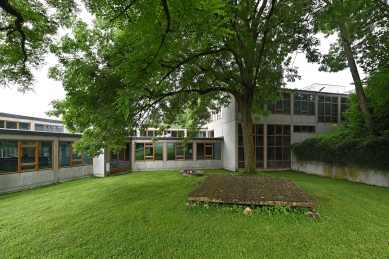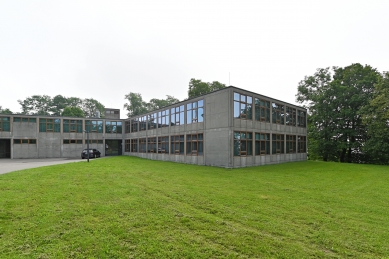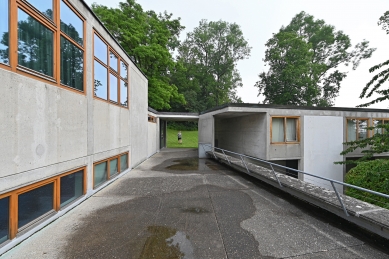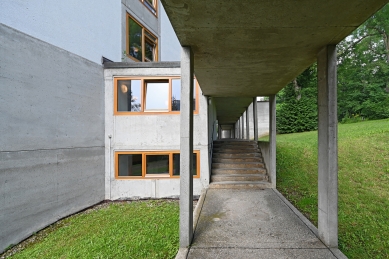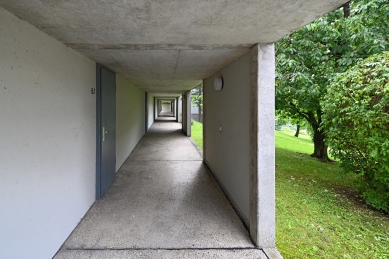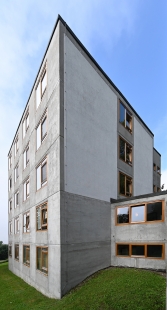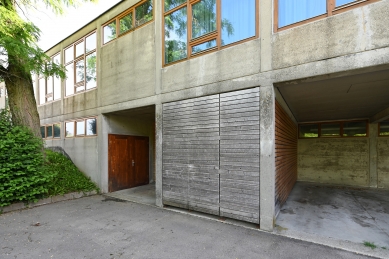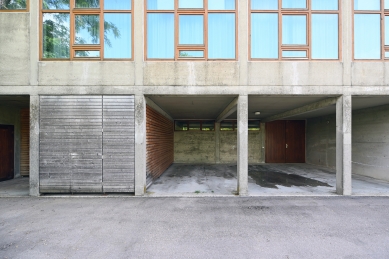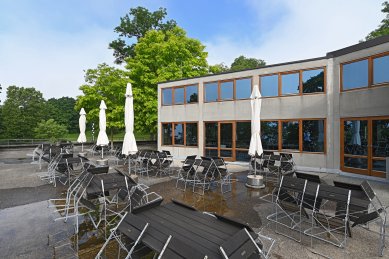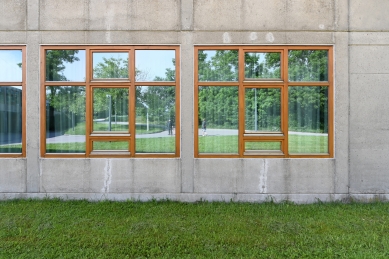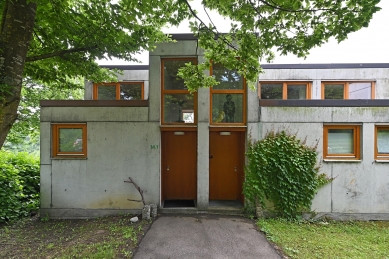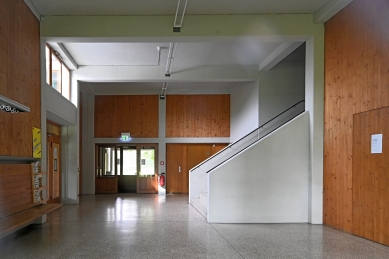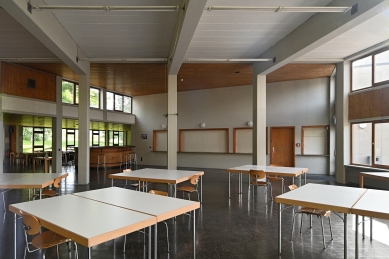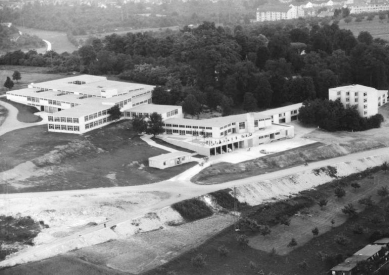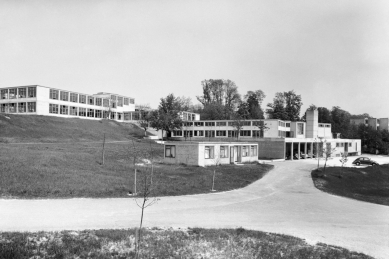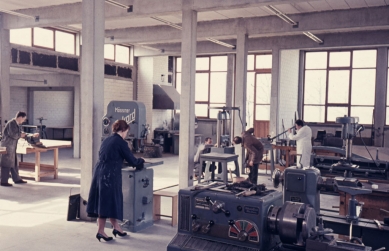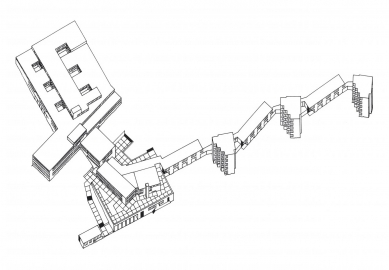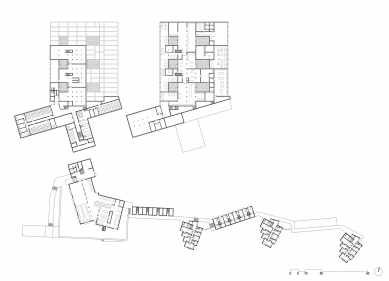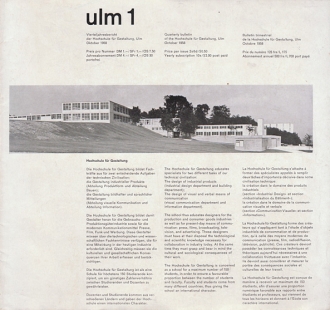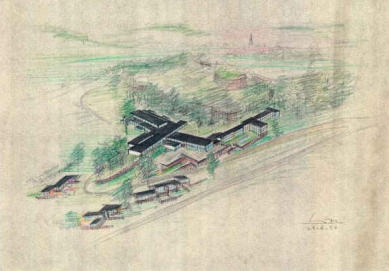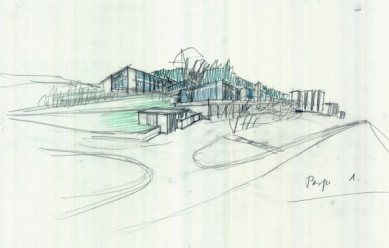
Higher School of Design in Ulm
University of Design Ulm

The art school Bauhaus had a short and tumultuous life. In fourteen years, it had to move twice before it was ultimately banned by the Nazis in the mid-1930s. Even before the outbreak of the war, former directors of the Bauhaus moved their activities across the Atlantic, where Walter Gropius led architecture at Harvard University, and Mies van der Rohe established the Illinois Institute of Technology in Chicago. Other Bauhaus educators, such as Josef Albers, also made their mark; he, as the director of Black Mountain College and founder of the Institute of Design at Yale University, mentored many figures of the American art scene in the second half of the 20th century.
After the war, the former Bauhaus buildings found themselves in East Germany. Some alumni attempted to revive the spirit of this famous school in West Germany. The most successful was Swiss architect and designer Max Bill, who helped establish the Hochschule für Gestaltung Ulm (Ulm School of Design) in 1953 on the western outskirts of Ulm together with Inge Aicher-Scholl and graphic designer Otl Aicher, where Bill also served as its first rector from 1953-56.
However, the sloping land south of the Danube was not always a peaceful place for focused artistic work. The school is adjacent to the former fortification Oberer Kuhberg from the mid-19th century, which served as an internment camp for opponents of the rising regime in the mid-1930s. Inge Aicher-Scholl also endured the hardships of war. Her two siblings were founders of the nonviolent anti-Nazi group White Rose and victims of the Nazi regime. In 1946, Aicher-Scholl founded an adult education institution in Ulm called Volkshochschule, attracting intellectuals not just from Germany to train a new generation of democratically minded professionals. In this building in the center of Ulm, she also started teaching the first 21 students of the art school in August 1953, with the participation of former Bauhaus educators such as painter Josef Albers and Johannes Itten, textile artist Helene Nonné-Schmidt, and photographer Walter Peterhans.
Thanks to previous good contacts with Walter Gropius, generous American support of one million dollars was secured from the McCloy Foundation. The same amount was later jointly provided for construction by the German federal government, the city of Ulm, and local industrial enterprises. Nevertheless, the project faced a tight budget. Donated materials from industrial companies, including steelworks and concrete plants, had to be used. A large portion of the interior furnishings was made by the students as part of studio instruction. The resulting school complex consisted of a pavilion structure with classrooms, workshops, a cafeteria, student dormitories, and faculty houses.
The festive opening of the new school campus on October 2, 1955, was attended by former Bauhaus director Walter Gropius. Soon, younger colleagues expressed efforts for a tighter connection between design and science, which led Max Bill to resign from his rectorship in 1956, and he definitively left the school a year later. In 1968, the school had to be permanently closed due to management errors. Thus, the school in Ulm functioned only a year longer than the famous Bauhaus, to which it is often compared, and enjoyed at least equally good international reputation in the field of design. In 1979, the campus came under heritage protection, and in 1987 the city of Ulm established an archive here.
After the war, the former Bauhaus buildings found themselves in East Germany. Some alumni attempted to revive the spirit of this famous school in West Germany. The most successful was Swiss architect and designer Max Bill, who helped establish the Hochschule für Gestaltung Ulm (Ulm School of Design) in 1953 on the western outskirts of Ulm together with Inge Aicher-Scholl and graphic designer Otl Aicher, where Bill also served as its first rector from 1953-56.
However, the sloping land south of the Danube was not always a peaceful place for focused artistic work. The school is adjacent to the former fortification Oberer Kuhberg from the mid-19th century, which served as an internment camp for opponents of the rising regime in the mid-1930s. Inge Aicher-Scholl also endured the hardships of war. Her two siblings were founders of the nonviolent anti-Nazi group White Rose and victims of the Nazi regime. In 1946, Aicher-Scholl founded an adult education institution in Ulm called Volkshochschule, attracting intellectuals not just from Germany to train a new generation of democratically minded professionals. In this building in the center of Ulm, she also started teaching the first 21 students of the art school in August 1953, with the participation of former Bauhaus educators such as painter Josef Albers and Johannes Itten, textile artist Helene Nonné-Schmidt, and photographer Walter Peterhans.
Thanks to previous good contacts with Walter Gropius, generous American support of one million dollars was secured from the McCloy Foundation. The same amount was later jointly provided for construction by the German federal government, the city of Ulm, and local industrial enterprises. Nevertheless, the project faced a tight budget. Donated materials from industrial companies, including steelworks and concrete plants, had to be used. A large portion of the interior furnishings was made by the students as part of studio instruction. The resulting school complex consisted of a pavilion structure with classrooms, workshops, a cafeteria, student dormitories, and faculty houses.
The festive opening of the new school campus on October 2, 1955, was attended by former Bauhaus director Walter Gropius. Soon, younger colleagues expressed efforts for a tighter connection between design and science, which led Max Bill to resign from his rectorship in 1956, and he definitively left the school a year later. In 1968, the school had to be permanently closed due to management errors. Thus, the school in Ulm functioned only a year longer than the famous Bauhaus, to which it is often compared, and enjoyed at least equally good international reputation in the field of design. In 1979, the campus came under heritage protection, and in 1987 the city of Ulm established an archive here.
The English translation is powered by AI tool. Switch to Czech to view the original text source.
0 comments
add comment


